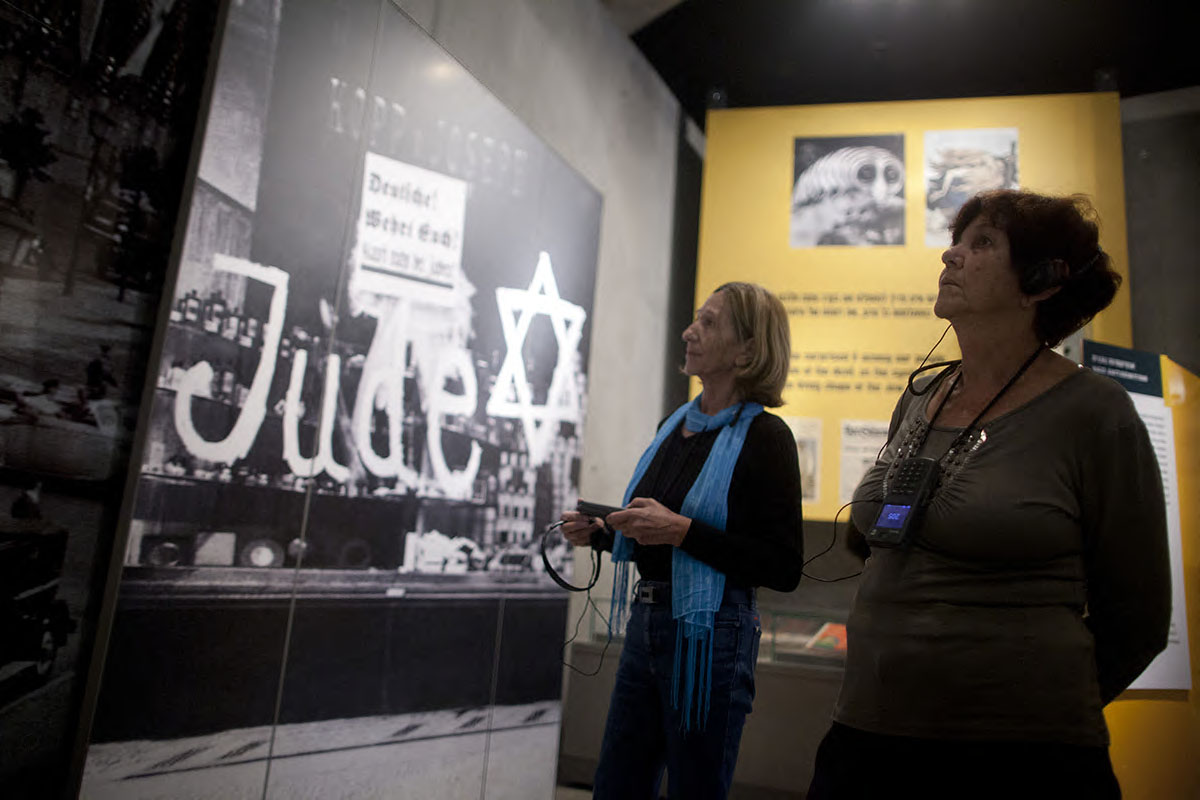In his later years, Abba Kovner, Holocaust survivor, poet, partisan, and one of the leaders of the Vilna ghetto underground, wrote of his fellow survivors rebuilding their lives:
“Those people… could have resignedly settled down where they were and tried to restore their ruined lives. I would not have been surprised had those same survivors become bands of thieves, robbers and murderers; had they done so, they might well have been the most humane and just of their kind."
Kovner’s comments reflect his wonderment at the survivors’ rehabilitative and creative energies. The fact that they were able to build and create after all the suffering and trauma that was their lot during the Holocaust is not to be taken for granted.
Following WWII, most Holocaust survivors chose to concentrate on building their lives, with many of them doing so in Eretz Israel, which they viewed as “Home.” The annals of the Holocaust survivors who made aliyah to Israel are apparently unparalleled in the history of human migrations. Only very rarely has a group of newly arrived immigrants integrated so successfully into their new society, and become such active partners in shaping its face and character.
From the day they reached the Land of Israel, the survivors took on two simultaneous missions: shaping and preserving the memory of the Shoah on the one hand, and constructive social action on the other.
Starting in the 1950s, Holocaust survivors began to shape the fundamentals of Shoah remembrance. They became the first researchers in the field, the founders of its museums and commemorative institutions, and the authors of communal memorial books. Their extensive and diverse activities testify to their profound dedication to the topic and to the sense of historic mission that motivated them so powerfully. Having personally lived through the Holocaust, they perceived its significance and knew it must be documented by them. On behalf of future generations and out of concern that what was not told immediately might remain forever lost, and imbued with a sense of purpose and responsibility towards the victims, the survivors initiated the endeavor of testimony documentation. At the same time, they assumed an active role in legislative measures to ensure the status of Holocaust remembrance in Israel for generations to come. In 1953, the Knesset enacted the Martyrs' and Heroes' (Yad Vashem) Law, followed in 1959 by the adoption of the Martyrs’ and Heroes’ Remembrance Day Law.
At the same time, the survivors contributed substantially by joining in the development of Israel's formative society. Many arrived when they were young and brimming with enthusiasm, and quickly became part of the combat forces fighting for Israel's independence: the Haganah, Palmach, Etzel and Lehi; following the establishment of the State of Israel, they joined the ranks of the Israel Defense Forces. Holocaust survivors constituted approximately half of Israel's combat soldiers during its War of Independence, and many of them fell in that war – casualties who had scarcely become familiar with the land for which they fought, and who sometimes were the last of kin of extended Jewish families that had been virtually annihilated during the Shoah. Yet their decisive role in combat represented for them a kind of “constructive retaliation.” The newcomers’ involvement endowed them with a sense of belonging and partnership in their new country.
Holocaust survivors became an inseparable part of Israeli society, with their legacy evident in numerous fields: land reclamation and settlement, industry, science, economics, law, academia and culture. From their ranks emerged painters and graphic designers, poets and authors, athletes and stage performers, scientists and intellectuals. These survivors struggled to restore themselves by committing to living lives of productive labor and creative endeavor.
Holocaust survivor Leyb Rochman wrote the following about the role of the State of Israel in the survivors’ experience: “During the first post-Shoah years, we lived lives of despair. However, the cup of our despair now contains drops of comfort… I have lived here for nearly 25 years, and I can attest to my own restoration. Here is where my children were born… I now have a granddaughter. I thought I would never again see my mother, sister or brother. Now, I see them once more – in the faces of my children and granddaughter, in my home in Jerusalem, where they have been as if reborn, before my very eyes. It’s no wonder that everything that’s happened here is so dear to us, is in our hearts and our souls. Perhaps only those who feel the great pain of the past can fathom what we have accomplished here, what we have been privileged to attain.”






